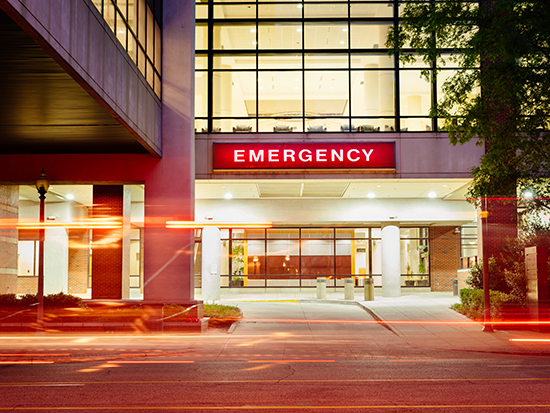Media contact: Savannah Koplon
 New efficient care for patients with stroke is helping UAB lead the way in outcomes for patients who present in the emergency department.Time is the key to preventing death and disability from stroke. When a patient suffering a stroke arrives at the UAB Hospital Emergency Department, a rapid response team strives to provide the most appropriate care in the shortest time possible.
New efficient care for patients with stroke is helping UAB lead the way in outcomes for patients who present in the emergency department.Time is the key to preventing death and disability from stroke. When a patient suffering a stroke arrives at the UAB Hospital Emergency Department, a rapid response team strives to provide the most appropriate care in the shortest time possible.
In July 2023, the UAB Emergency Department established a designated treatment area called a stroke launchpad to provide even more efficient care for patients with stroke. Thanks to a successful implementation of the launchpad, the care teams are seeing measurable improvements in efficiency, collaboration and outcomes.
The launchpad is located within the UAB Hospital Emergency Department. In this one location, a team of specialists decides whether to intravenously administer the clot-busting medication, Tenecteplase. They also consider catheter-based procedures such as thrombectomy, aspiration and stenting. Delivering stroke care is an “all-hands-on-deck” process, and the launchpad provides a centralized location for all providers involved.
Proximity equals efficiency
The success of treatment often depends on how quickly medication or other care is provided, which is generally known as door-to-needle time, or DTN. Kevin S. Barlotta, M.D., director of Quality and Patient Safety for the University of Alabama at Birmingham Department of Emergency Medicine, says the ED launchpad has significantly improved DTN.
“With stroke, our efficiency and diagnostic accuracy are the keys to successful interventions,” Barlotta said. “The launchpad allows us to increase our efficiency, so we can stay within the window of effective treatment. It streamlines the process for patients, getting them to a designated central area within the ED that is also in close proximity to the CT scanner.”
In many cases, the ED is informed by emergency personnel prior to arrival that a potential stroke patient is on the way, and these patients are taken directly to the ED stroke launchpad.
“Our benchmark DTN is 60 minutes,” Barlotta said. “In September of 2023, we had a DTN of less than 60 minutes 100 percent of the time, and I have observed a trend with the launchpad of patients having a DTN of less than 45 minutes and sometimes less than 30 minutes.”
Teamwork
Barlotta says being able to deliver care in a centralized area is crucial.
“Streamlining the process of care for our teams translates to better outcomes, and launchpad is a particularly telling example of that,” Barlotta said. “By placing the patient in one location, the entire care team — including STAT nurses, the CT team, pharmacy, neurology and ED teams — can meet and begin delivering care in a single, centralized area next to the CT scanner. The idea is to get the patient into the CT scanner and gather enough information for determining treatment with a thrombolytic medication or the need for further studies to determine whether a clot-removing procedure is required. So, centralization and proximity are key components of the launchpad.”
The success of the launchpad is especially significant for a hospital like UAB, which sees a high volume of patients with stroke.
“Our ED had been in a period of record levels of boarding and record numbers of patients,” Barlotta said. “Despite these challenging times, I am very proud of our team’s efforts to carve out a process that enhances ED collaboration with specialists and elevates our stroke care. Our goal is to better serve patients, which makes the implementation of the launchpad a big win.”